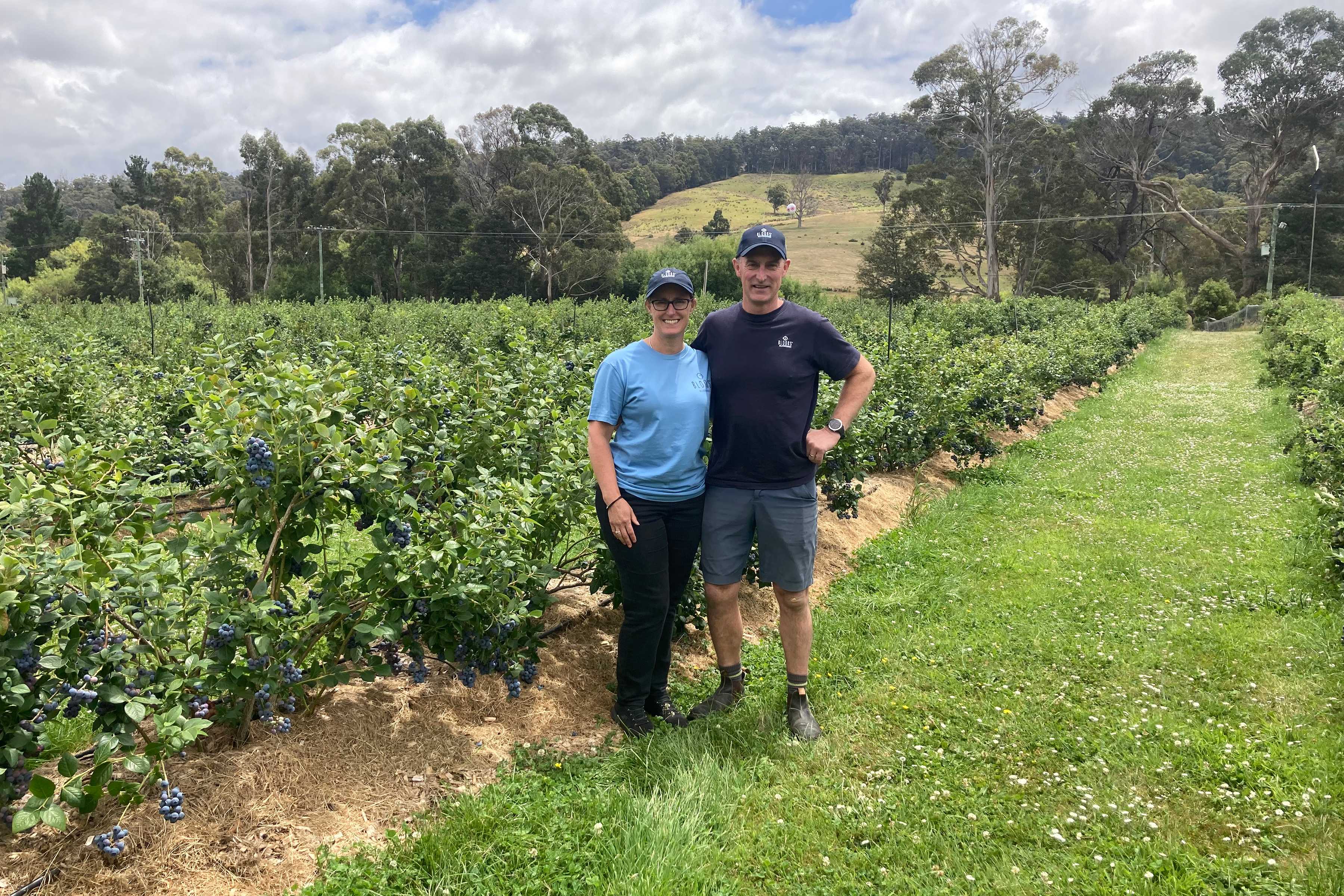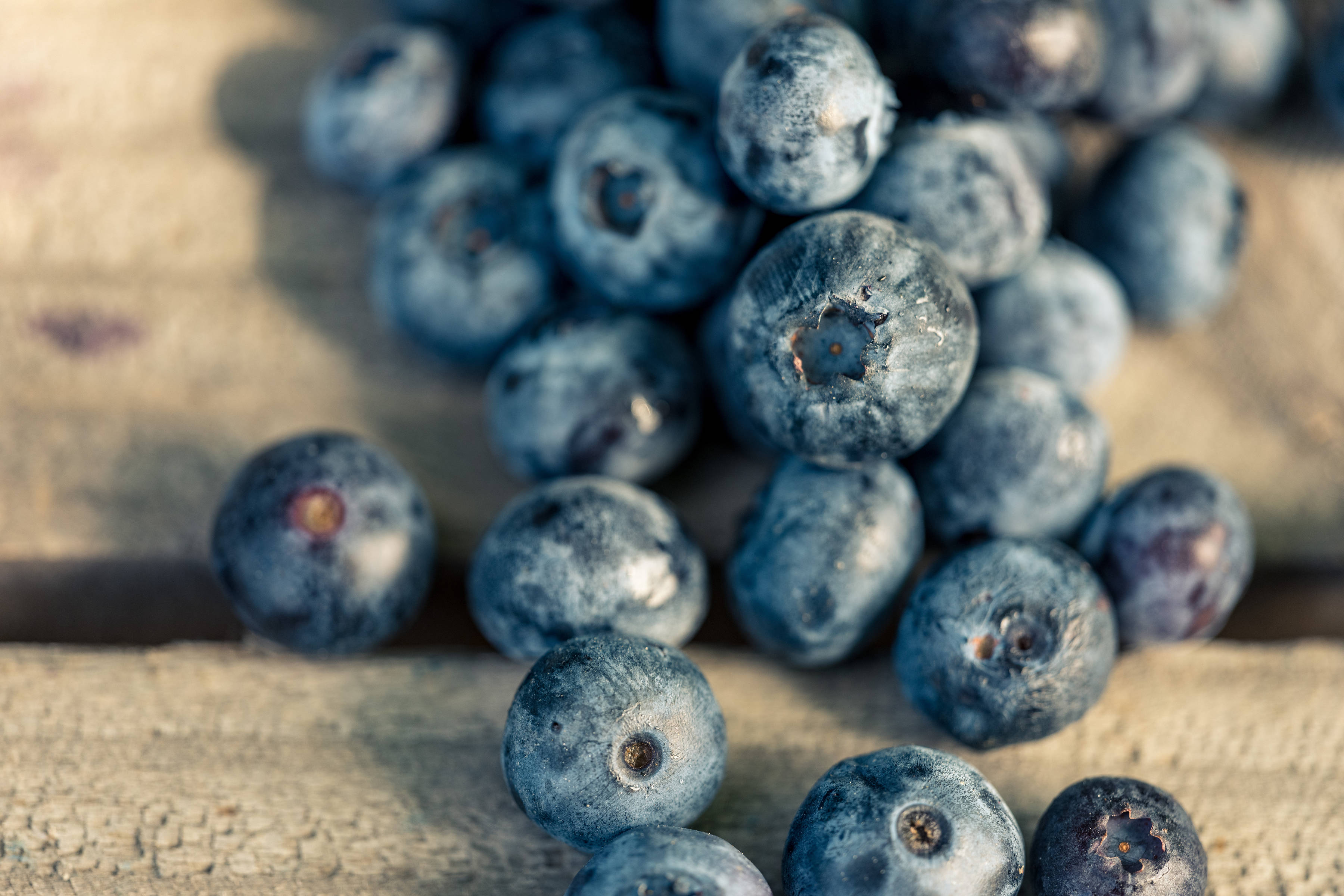
Tim and Jo Muir of Bloobs Blueberries
Read more

Tasmania is a significant producer of delicious plump blueberries including organic berries.
The blueberry sector in Tasmania is expanding, particularly under polytunnels which protect fruit and extend the seasonal window.
The total value of the Tasmanian blueberry industry is $34 million. Tasmania is the second largest blueberry growing state.
Production is largely located on the Central North West coast, with production also in the Tamar Valley and North East, as well as the Huon Valley in the south.
Tasmanian growers have exported to international markets over the years, however, in recent times they have experienced strong domestic demand as the quality and taste is much sought after.
December–May
Highbush, Rabbiteye, Southern Highbush, Brigitta, Bluecrop, Caroline and Denise
1,900MT
$34M
Trade data source Fruit Growers Tasmania
Being a remote island surrounded by water and aided by a robust biosecurity system, Tasmania remains free from many plant-related pests and diseases including Queensland fruit fly and Mediterranean fruit fly. This freedom means our produce can be exported with minimal, if any, phytosanitary treatment.
Tasmanian blueberries are grown in the Huon Valley, Central North West, North East and Tamar Valley regions.
“Our buyers tell us they wait for the Tasmanian season because our blueberries are firmer and have greater flavour.”
Tasmania’s relative pest free status offers trade opportunities for importing countries seeking access to Tasmanian grown produce.
This information is extracted from the Department of Agriculture Fisheries and Forestry’s Manual of Importing Country Requirements which is frequently updated. Please validate this information before proceeding further.
The importing country has no phytosanitary restrictions for entry into the market.
Open to Tasmania, without requiring any phytosanitary treatment.
No arrangements have been developed to make trade between the two countries possible, or trade is currently not allowed.
Through the generations our growers feel the pulse of the seasons and heartbeat of this land. They understand what thrives here — they take the time to grow produce with care. Meet some of our passionate, committed and knowledgeable Tasmanian growers…
Submit your interest and we will share your details with Tasmanian growers.